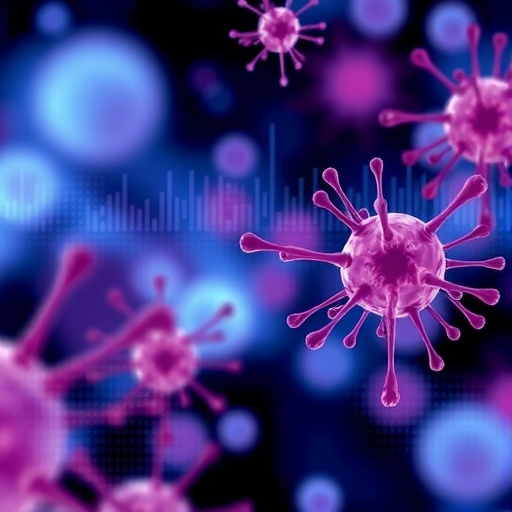In a groundbreaking systematic review published in BMC Cancer, researchers have meticulously analyzed the evolving landscape of natural killer (NK) cell-based therapies for acute myeloid leukemia (AML), charting two decades of clinical trials that underscore the immense potential and current challenges of this immunotherapeutic approach. AML, a notoriously aggressive blood cancer, continues to defy traditional treatments, often leading to relapse and poor outcomes. This comprehensive analysis shines a spotlight on NK cells, innate immune warriors whose precise targeting and cytotoxic capabilities position them as formidable agents against AML.
NK cells, unique components of the immune arsenal, are central to surveillance against malignant cells due to their intrinsic ability to recognize and eradicate aberrant cells without prior sensitization. Their utilization in AML therapy arises from this distinctive biology, promising a therapeutic strategy that could circumvent some limitations of chemotherapy and existing hematopoietic stem cell transplantation (HSCT) regimens. The review rigorously follows PRISMA standards to ensure an exhaustive and systematic capture of relevant clinical trials, emphasizing the science behind NK cell sourcing, manipulation, and clinical application.
The researchers identified a total of 48 clinical trials from five major medical databases, with 27 dedicated exclusively to AML and 21 spanning AML in conjunction with other hematologic neoplasms. This robust dataset allowed for an in-depth comparative evaluation of factors such as the origin of NK cells, the purification techniques applied, activation protocols, and measurable clinical endpoints including remission rates and survival metrics. The predominance of peripheral blood (PB)-derived NK cells, used in over 80% of studies, marks a trend rooted in both biological efficacy and practical accessibility.
Purification methods notably revolve around CliniMACS technology, leveraging CD3 depletion and CD56 selection to achieve NK cell populations with minimal contamination from other immune cells. These techniques enhance the functional purity of the therapeutic cell product, which is critical for both efficacy and safety. Activation strategies bifurcate primarily into short-term activation lasting 24 hours or less, and long-term expansion protocols extending beyond a week, each with nuanced impacts on NK cell potency, persistence, and patient outcomes.
The clinical efficacy of NK cell-based interventions outside the HSCT framework is particularly striking. The review reports a complete remission (CR) rate of 37.1%, a significant milestone in AML treatment that signifies patients attaining full disease regression. Furthermore, event-free survival (EFS) stands robust at 71.3%, reflecting durable responses and delayed disease progression. These outcomes highlight NK cell therapies as a potent monotherapy or adjunct, potentially reshaping AML treatment paradigms.
Post-HSCT applications of NK cell therapies also demonstrate promising results. Overall survival (OS) rates reach 39.5%, illustrating the beneficial role of NK cells in the transplant setting, where relapse remains a formidable challenge. Importantly, the low incidence of graft-versus-host disease (GVHD) in these NK cell trials marks a critical clinical advantage. GVHD is a severe, often life-threatening complication of allogeneic HSCT, and its mitigation enhances patient quality of life and treatment tolerability.
Beyond these clinical metrics, the review delves into the mechanistic insights underpinning NK cell function. The ability of NK cells to discern stressed or malignant cells without the need for antigen-specific receptors allows for broad-spectrum activity against AML blasts, which are notoriously heterogeneous. Understanding and optimizing the conditions for NK cell expansion and activation have become focal points for enhancing their therapeutic index.
Despite these encouraging findings, the authors emphasize the ongoing challenges. NK cell persistence in vivo, immunosuppressive tumor microenvironments, and the need for scalable, reproducible manufacturing processes remain critical barriers. The heterogeneity of NK cell products and clinical protocols across trials underscores a pressing need for standardized methodologies to facilitate cross-study comparisons and meta-analyses.
This review also ignites discussion on the integration of NK cell therapies with other treatment modalities. The synergy between NK cell infusions and HSCT or chemotherapeutic regimens holds promise for multifaceted attack strategies against AML. Increasingly, attention turns toward genetic engineering, such as CAR-NK cells, to augment specificity and cytotoxicity, although these advanced modalities were beyond the temporal scope of the reviewed trials.
Importantly, the favorable safety profile of NK cell therapy distinguishes it from many immunotherapies. The rarity of severe adverse events and manageable toxicity profiles increase its viability as a frontline or salvage therapy. As the field advances, tracking long-term patient outcomes including quality of life and immune reconstitution after NK cell therapy becomes paramount.
The systematic review ultimately calls for large-scale, controlled clinical trials to overcome the limitations of current data, characterized largely by small cohorts and early-phase studies. Such trials will be instrumental in confirming efficacy, establishing dosing regimens, and clarifying the role of NK cells within the broader AML treatment algorithm.
Collectively, these findings position NK cell-based immunotherapy as a promising frontier in AML management. The dual capability of NK cells to exert potent anti-leukemic effects coupled with a low toxicity profile could revolutionize treatment approaches, particularly for patients ineligible for intensive chemotherapy or transplantation.
As the oncology community seeks more precise, durable, and personalized interventions, the insights gleaned from these two decades of clinical investigation lay a critical foundation. They open avenues not only for NK cell therapy optimization but also for novel strategies combining innate immune effectors with emerging technologies.
In conclusion, this systematic review highlights both the remarkable progress and the formidable challenges that define NK cell therapy’s journey in AML treatment. It marks a compelling call to action for further research to unlock the full clinical potential of these innate immune cells, promising a future where AML’s relentless course might finally be altered through harnessed immunity.
Subject of Research: Acute myeloid leukemia (AML) and natural killer (NK) cell-based immunotherapy
Article Title: A systematic review of the last two decades of NK cell-based clinical trials: state of the art of AML therapy
Article References:
Bakhtiyaridovvombaygi, M., Kheyrandish, S., Safdari, S.M. et al. A systematic review of the last two decades of NK cell-based clinical trials: state of the art of AML therapy. BMC Cancer 25, 1461 (2025). https://doi.org/10.1186/s12885-025-14837-y
Image Credits: Scienmag.com
DOI: https://doi.org/10.1186/s12885-025-14837-y




